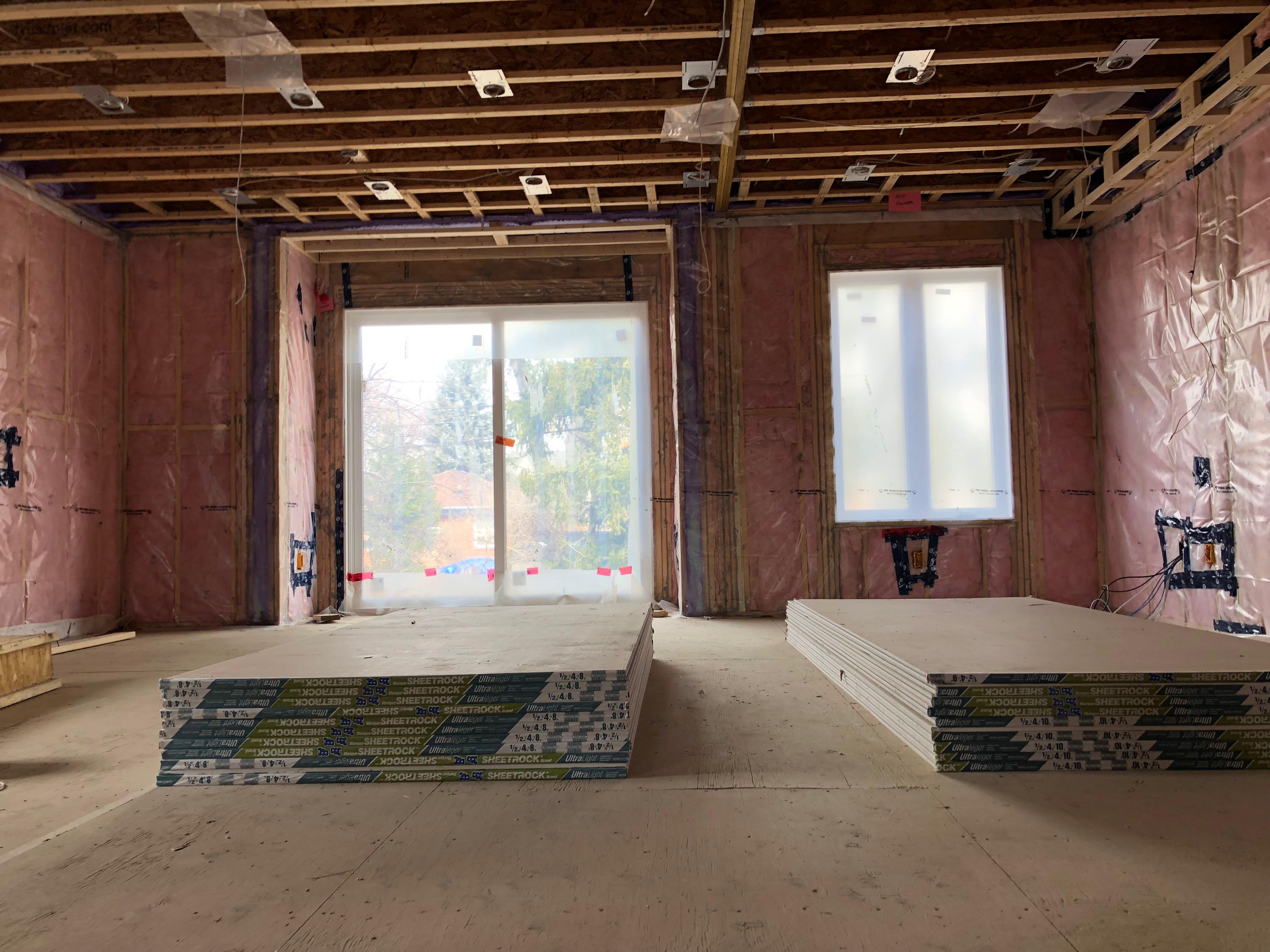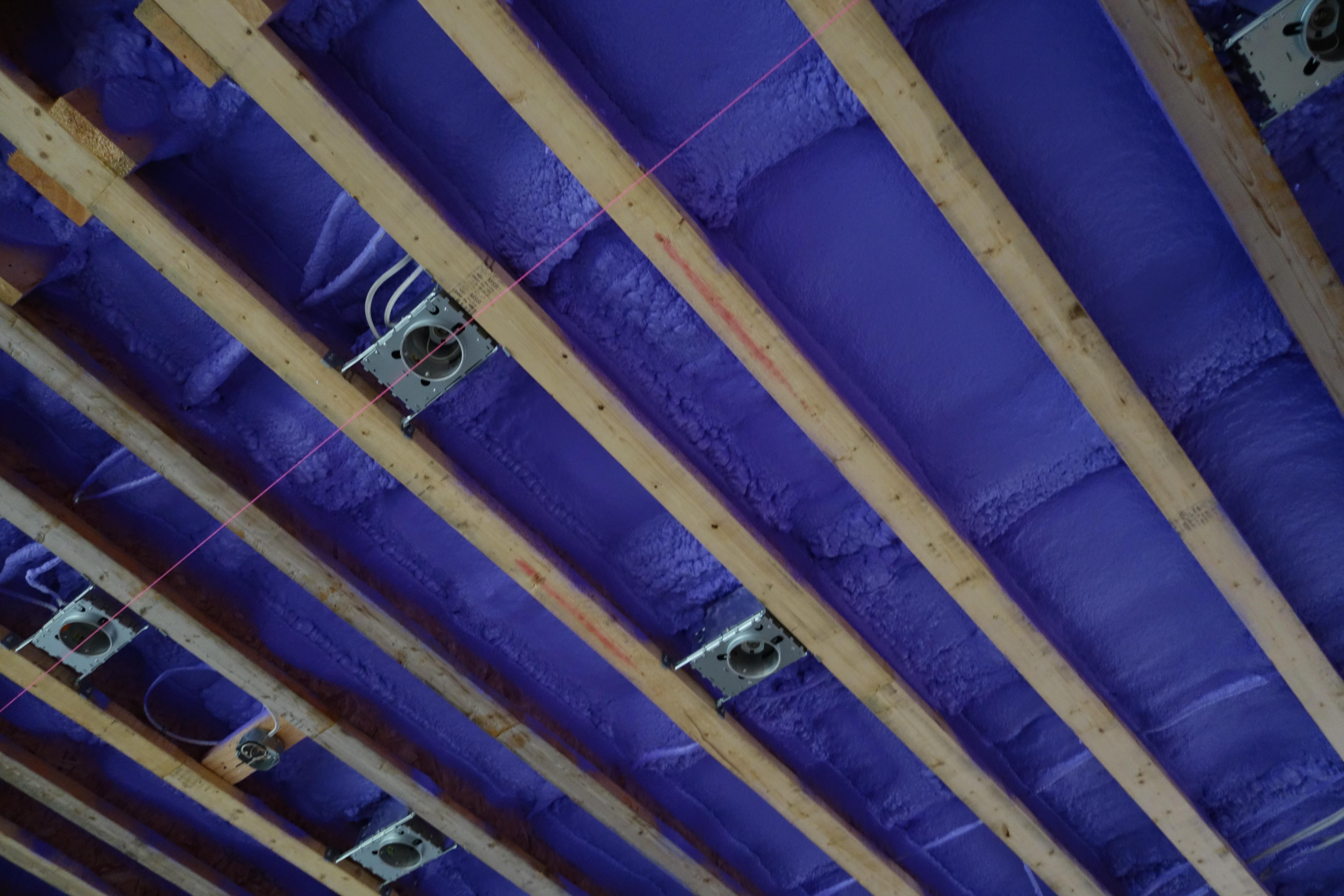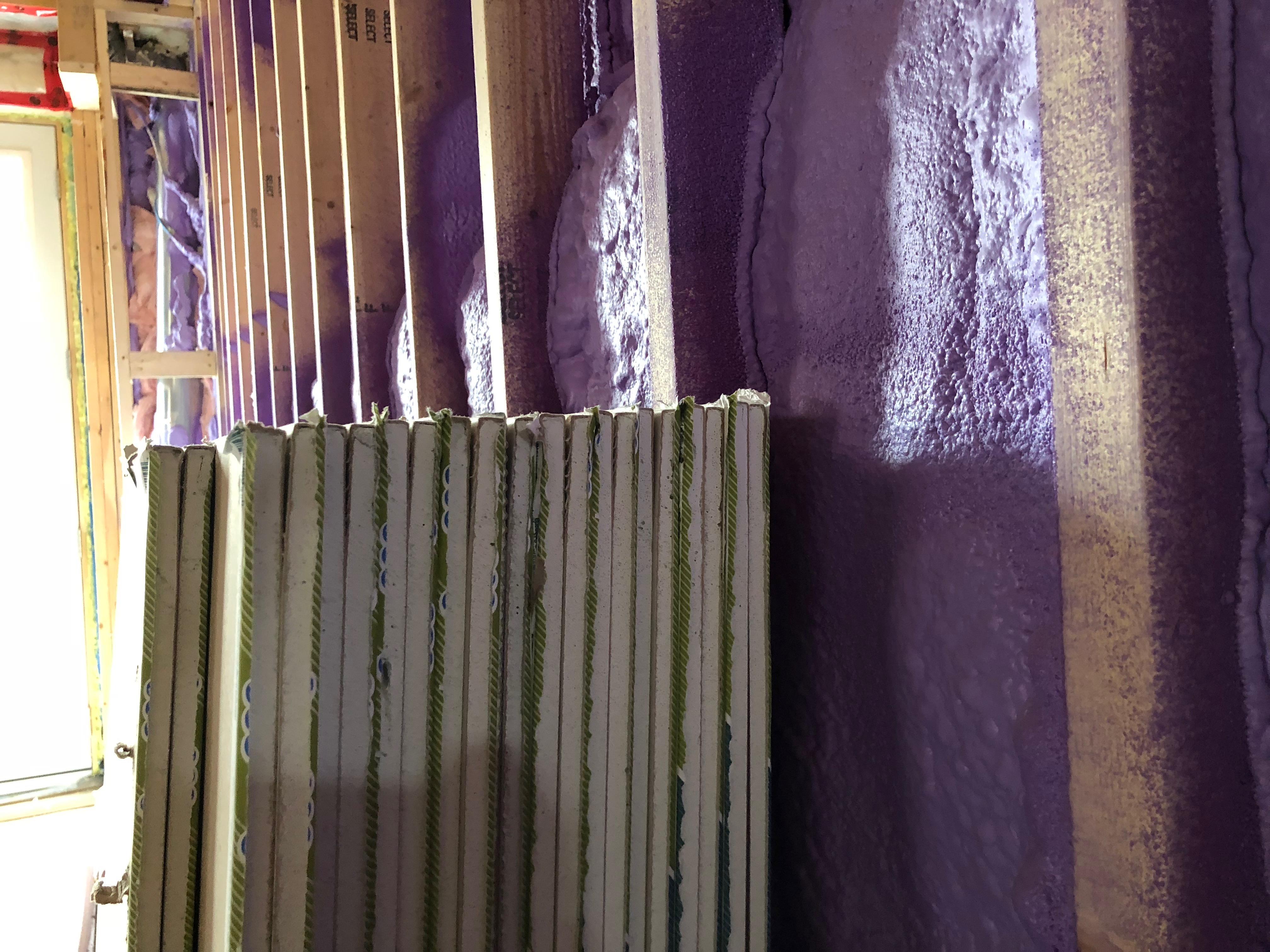When someone asks you to think of insulation, you may immediately think of the attic – and you will be right. The attic is one of the main areas of potential heat loss in your house.
Did you know that properly insulated attic can save 10 to 50% off your heating bill? During winter and helps to keep cooling needs in check in the summer.
Let’s look at your house in a different way. Your house is like a body. Walls as a skin, pipes as veins and living room as a heart, where all family gather together. And as all living organisms, the house needs to “breathe”. The air should circulate through the house and blow from the eaves up to the roof. This ventilation is important! It keeps the roof cold in winter and prevents it from frost that can damage your roof and even your house.
1. Choosing the “right” insulation is important.
When you get a quote for spray foam insulation, the price might shock you. But spray foam has a higher R-value per inch than loose fill or batt insulation and counts as the best from all. Of course you can choose cheaper but poor performance insulation materials for your attic, but that can lead to several problems. Let’s take a look at a couple of them.
2. Mildew and Mold.
The most common issue that can be found in fiberglass and cellulose insulation, is mold. Fiberglass itself is mold resistant, however, mold can grow on fiberglass insulation backing. It is made of paper and is a food source for mold. If the house doesn’t have a good vapor barrier and there are air leaks, then fiberglass or cellulose will absorb the water creating a perfect environment for mold. The mildew and mold will start to grow rapidly. It can be very dangerous for everyone in your home including your pets.
You can prevent it by adding in addition to cellulose or fiberglass an air seal. Or installing spray foam instead, which acts as both air seal and an insulator.

3. Ice dams and Frost.
If during the winter, the snow on your roof forms the ice dams, that indicates that there is a problem with your attic insulation. When part of the roof warms up above o degree C (32 F), the snow melts and runs down your roof, refreezing near the roof edge. That’s how ice dams are formed. Ice dams and icicles can be a bigger problem than you might think.They can cause damage to the roof and that means you will need more money spent to fix not only your attic insulation, but also the roof.
There are a few solutions to this. You could add more insulation to your attic floor, and floor only. This will keep the temperature the same. If you add a ridge vent paired up with continuous soffit vents. The vents will circulate the cold air throughout the attic that could also help with the problem. Another option is once again to insulate the roof deck with spray foam. This will create an air seal that keeps the cold air from circulating around the attic and will maintain a constant temperature.

Frost is another problem which can appear if your house is not properly “breathing”. Frost gathers when moisture weighted in the air gets from the house into the attic. When moisture gets into the attic, it very fast condenses on the roof envelop in the form of frost. The frost itself doesn’t do any damage, but once it melts getting things wet, creating damages. The water from melting frost can lead to roof sheathing to worsen and run-down by creating mold on it, wet insulation, and water stains on the ceilings.
Of course, you might think that any type of exhaust fan will do the trick but you are mistaken. Even if the fan is aimed at a roof vent, a lot of moist air will still find its way back into the attic.
The best way to prevent frost from gathering in the attic, is to seal off attic of all air leaks. Once every air leak has been perfectly sealed, the attic will be frost free. At the same time it can be difficult, as the air leaks are located underneath the attic insulation, and it can be very problematic to find every small air leak without completely removing the attic insulation.
4. In Conclusion.
There are a number of reasons why traditional insulation isn’t performing as well as it could. Overtime cellulose and blown fiberglass can settle or drift, leaving your attic insulation with a lower R-value, disturb air movement, which will make you to increase heat in your home and electricity bills. What a solution would be in this case, you ask? Fiberglass or blown cellulose must be regularly maintained by adding more insulation. You also can use a different insulation materials such as spray foam insulation.
- Spray foam insulation doesn’t settle or loose its shape over time and can fix a number of issues in your home:
- Your home will be warm in the winter and cool in the summer.
- You won’t have high heating and cooling bills anymore.
- Your walls won’t feel cold to the touch when temperatures drops outside.
- Your floors won’t be cold during the winter.
- You won’t feel drafts around the house.
- You won’t have ice dams and icicles on your roof edges.

If you’re considering to turn your attic into a living space or conditioned storage, the best way to insulate the space would be to install spray foam. For a proper installation you can hire a professional to spray foam and insulate between the rafters and wall joists instead of the floor. Spray foam blocks airflow, doesn’t need a vapor barrier, and has a higher R-value per inch than all other insulation materials. Then after spray foam is done, cover it with drywall as required for fire safety and get ready for a cozy warm winter and cool summer!